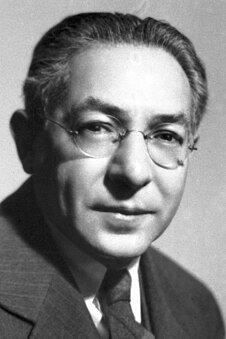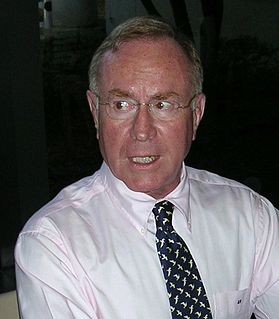Related Research Articles

Isidor Isaac Rabi was an American physicist who won the Nobel Prize in Physics in 1944 for his discovery of nuclear magnetic resonance, which is used in magnetic resonance imaging. He was also one of the first scientists in the United States to work on the cavity magnetron, which is used in microwave radar and microwave ovens.

Willard Frank Libby was an American physical chemist noted for his role in the 1949 development of radiocarbon dating, a process which revolutionized archaeology and palaeontology. For his contributions to the team that developed this process, Libby was awarded the Nobel Prize in Chemistry in 1960.
Fringe science refers to ideas whose attributes include being highly speculative or relying on premises already refuted. Fringe science theories are often advanced by persons who have no traditional academic science background, or by researchers outside the mainstream discipline. The general public has difficulty distinguishing between science and its imitators, and in some cases a "yearning to believe or a generalized suspicion of experts is a very potent incentive to accepting pseudoscientific claims".

Richard Lee Rhodes is an American historian, journalist, and author of both fiction and non-fiction, including the Pulitzer Prize-winning The Making of the Atomic Bomb (1986), and most recently, Energy: A Human History (2018).

James Rodney Schlesinger was an American economist and public servant who was best known for serving as Secretary of Defense from 1973 to 1975 under Presidents Richard Nixon and Gerald Ford. Prior to becoming Secretary of Defense, he served as Chair of the Atomic Energy Commission (AEC) from 1971 to 1973, and as CIA Director for a few months in 1973. He became America's first Secretary of Energy under Jimmy Carter in 1977, serving until 1979.
Gerald J. Holton is an American physicist, historian of science, and educator, whose professional interests also include philosophy of science and the fostering of careers of young men and women. He is Mallinckrodt Professor of Physics and Professor of the History of Science Emeritus at Harvard University. His contributions range from physical science and its history to their professional and public understanding, from studies on gender problems and ethics in science careers to those on the role of immigrants. These have been acknowledged by an unusually wide spectrum of appointments and honors, from physics to initiatives in education and other national, societal issues, to contributions for which he was selected, as the first scientist, to give the tenth annual Jefferson Lecture that the National Endowment for the Humanities describes as, “the highest honor the federal government confers for distinguished achievement in the humanities”. However, his life story is also punctuated by improbable rescues during the dark time of the 20th century.

The Joint Institute for Nuclear Research, in Dubna, Moscow Oblast, Russia, is an international research center for nuclear sciences, with 5500 staff members, 1200 researchers including 1000 Ph.Ds from eighteen countries, like Armenia, Azerbaijan, Belarus, Kazakhstan and Ukraine, members of the institution. Most scientists, however, are eminent Russian scientists.

Pierre Victor Auger was a French physicist, born in Paris. He worked in the fields of atomic physics, nuclear physics, and cosmic ray physics. He is famous for being one of the discoverers of the Auger effect, named after him.

Marina von Neumann Whitman is an American economist, writer and former automobile executive. She is a professor of business administration and public policy at the University of Michigan's Ross School of Business as well as The Gerald R. Ford School of Public Policy.

Siegfried S. Hecker is an American metallurgist and nuclear scientist. He served as Director of the Los Alamos National Laboratory from 1986 to 1997 and is now affiliated with Stanford University, where he is research professor emeritus in the Department of Management Science and Engineering in the School of Engineering, and senior fellow emeritus at the Freeman Spogli Institute for International Studies. During this time, he was also elected a member of the National Academy of Engineering (1988) for outstanding research on plutonium and the forming of materials, and for leadership in developing energy and weapons systems.

Marcel Roche Dugand was a physician, scientist and scientific leader.

Sir Ernest William Titterton was a British nuclear physicist.

Mark Diesendorf is an Australian academic and environmentalist, known for his work in sustainable development and renewable energy. He currently teaches environmental studies at the University of New South Wales, Australia. He was formerly professor of environmental science and founding director of the Institute for Sustainable Futures at the University of Technology, Sydney and before that a principal research scientist with CSIRO, where he was involved in early research on integrating wind power into electricity grids. His most recent book is Sustainable Energy Solutions for Climate Change.
Anti-nuclear organizations may oppose uranium mining, nuclear power, and/or nuclear weapons. Anti-nuclear groups have undertaken public protests and acts of civil disobedience which have included occupations of nuclear plant sites. Some of the most influential groups in the anti-nuclear movement have had members who were elite scientists, including several Nobel Laureates and many nuclear physicists.
Jim Falk is a physicist and academic researcher on science and technology studies.
Shaiwatna Kupratakul is a Thai theoretical physicist. He is a scientist, educator, writer, translator, columnist, science communicator, producer and host of radio and television programmes. He focuses on science communication and the popularization of science through writing, radio and television media and public speaking. Kupratakul was nominated twice for the UNESCO Kalinga Prize in 1981 and 2004.
Arcot Ramachandran (1923-2018) was an Indian scientist, anthropologist, author and a former Under-Secretary General of United Nations Centre for Human Settlements, known for his scholarship on the subjects of heat and mass transfer and environment and his social commitment to the cause of sustainable development. The Government of India honoured him in 2003, with the Padma Bhushan, the third highest civilian award, for his services to the fields of Science and Engineering.

Albert Wattenberg, was an American experimental physicist. During World War II, he was with the Manhattan Project's Metallurgical Laboratory at the University of Chicago. He was a member of the team that built Chicago Pile-1, the world's first artificial nuclear reactor, and was one of those present on December 2, 1942, when it achieved criticality. In July 1945, he was one of the signatories of the Szilard petition. After the war he received his doctorate, and became a researcher at the Argonne National Laboratory from 1947 to 1950, at Massachusetts Institute of Technology from 1951 to 1958, and at University of Illinois at Urbana–Champaign from 1958 to 1986, where he pursued the mysteries of the atomic nucleus.
Badanaval Venkatasubba Sreekantan was an Indian high-energy astrophysicist and a former associate of Homi J. Bhabha at the Tata Institute of Fundamental Research (TIFR). He was also a Dr. S. Radhakrishnan Visiting Professor at the National Institute of Advanced Studies, Bangalore.

Janusz Ignacy Symonides was a Polish jurist, diplomat, and university professor.
References
- 1 2 "Ancestry® | Genealogy, Family Trees & Family History Records". ancestry.com. Retrieved 2018-10-01.
- 1 2 3 "GERALD L. WENDT, HAD AIDED UNESCO" . Retrieved 2018-10-01.
- 1 2 James, Belasco, Warren (2006). Meals to come : a history of the future of food. Berkeley: University of California Press. ISBN 9780520940468. OCLC 123767968.
- ↑ Sevan, Terzian (2013). Science education and citizenship : fairs, clubs and talent searches for American youth, 1918-1958. Basingstoke: Palgrave Macmillan. ISBN 9781137031877. OCLC 825107005.